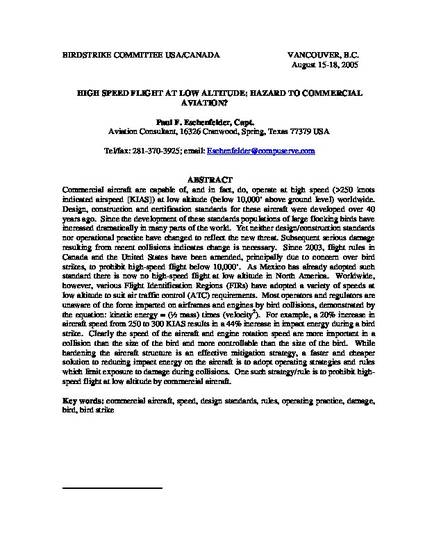
Commercial aircraft are capable of, and in fact, do, operate at high speed (>250 knots indicated airspeed [KIAS]) at low altitude (below 10,000’ above ground level) worldwide. Design, construction and certification standards for these aircraft were developed over 40 years ago. Since the development of these standards populations of large flocking birds have increased dramatically in many parts of the world. Yet neither design/construction standards nor operational practice have changed to reflect the new threat. Subsequent serious damage resulting from recent collisions indicates change is necessary. Since 2003, flight rules in Canada and the United States have been amended, principally due to concern over bird strikes, to prohibit high-speed flight below 10,000’. As Mexico has already adopted such standard there is now no high-speed flight at low altitude in North America. Worldwide, however, various Flight Identification Regions (FIRs) have adopted a variety of speeds at low altitude to suit air traffic control (ATC) requirements. Most operators and regulators are unaware of the force imparted on airframes and engines by bird collisions, demonstrated by the equation: kinetic energy = (½ mass) times (velocity2). For example, a 20% increase in aircraft speed from 250 to 300 KIAS results in a 44% increase in impact energy during a bird strike. Clearly the speed of the aircraft and engine rotation speed are more important in a collision than the size of the bird and more controllable than the size of the bird. While hardening the aircraft structure is an effective mitigation strategy, a faster and cheaper solution to reducing impact energy on the aircraft is to adopt operating strategies and rules which limit exposure to damage during collisions. One such strategy/rule is to prohibit high-speed flight at low altitude by commercial aircraft.
Available at: http://works.bepress.com/paul_eschenfelder/6/
